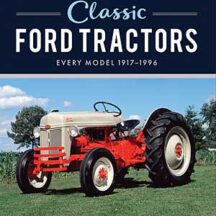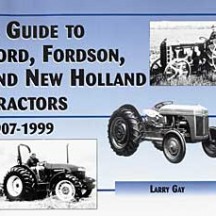I first read this book as a teenager in the late 1970s. My uncle had purchased his 1951 8N by then and he had enlisted my help in keeping it going, switching out loaders and finding projects that were tractor-oriented. I found myself hooked on mechanical stuff. I’m not sure how I came to finding this book – maybe I saw it in a bookstore or my uncle or parents gave it to me. At the same time, I was determined to find an old pickup for myself that I could use as a daily driver (though that notion was extinguished by actually DRIVING an old pickup.)
Around this same time, I read Robert Pirsig’s book, Zen and the Art of Motorcycle Maintenance. Though I enjoyed some of it, I found there was too much philosophical babble for my teenaged brain to handle.
On the back cover of the original Truck book, there is a review quote from naturalist Edward Abbey (who I mistook back then as Edward Albee, the playwright.) He said, “I like it. Not so psychomelodramatic as Zen and the Art of Motorcycle Maintenance but funnier, earthier, and really wiser.” I thought, “This is for me.”
Truck feels like the 1970s, in a good way. There is a lot to be said for the mix of positivity, back-to-the-land-hopeful-wisdom mixed with mild sarcasm. By twenty-first century standards, the tone feels uplifting. Written in the first person, Jerome (at the time in his early 40s) had moved from the city where he was involved in publishing, to northern New Hampshire. He was still writing for Car & Driver and other magazines to make a living, but pursuing a major life change.
There is the right mix of earthy realism, seat-of-the-pants philosophy and a touch of busted knuckle greasiness that makes this an especially enjoyable read. It’s not just about getting an old truck back on the road, but also challenging oneself to do something out of your comfort zone.
After looking for a copy of this book for years (there are a lot of books that start with the word “truck”), I finally succeeded and tracked down the current owner/publisher and convinced them to do a short press run. I think you will enjoy it. $19.95. S&H will be added to your total order.








